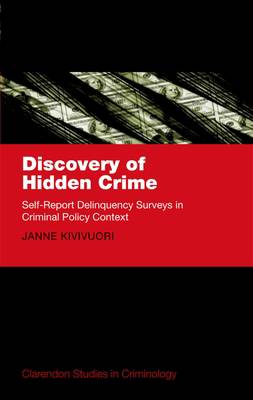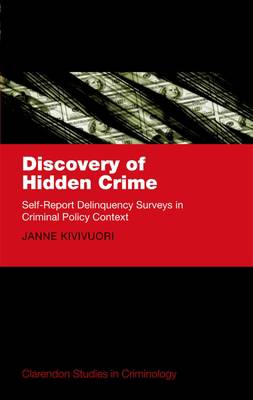
- Retrait gratuit dans votre magasin Club
- 7.000.000 titres dans notre catalogue
- Payer en toute sécurité
- Toujours un magasin près de chez vous
- Retrait gratuit dans votre magasin Club
- 7.000.000 titres dans notre catalogue
- Payer en toute sécurité
- Toujours un magasin près de chez vous
Discovery of Hidden Crime
Self-Report Delinquency Surveys in Criminal Policy Context
Janne Kivivuori
119,45 €
+ 238 points
Description
Discovery of Hidden Crime presents a history of the self-report crime survey as a method of criminological inquiry, describing how it was born within a distinct moral framework by pioneers out to show that crime was very prevalent and, therefore, normal. This books recounts how, during the 1930s and 1940s, a handful of US criminologists discovered the method of the self-report delinquency survey - a method used to ask people directly about their crimes. Previously, criminologists had to rely on official statistics produced by the police and other control authorities; their studies were therefore constrained by the 'official control barrier', which perpetuated the notion that crime was linked to the lowest social strata and/or to psychological abnormality. By confronting the domination of psychiatrists and psychologists in the study of crime, criminologists began to challenge the punitive attitudes of society; thus, exposing the so-called white collar offenders and alerting people to see crime as something that could also be found among the middle and upper classes. Expounding both the history of that discovery and its implications for criminological work, past and present, this book offers a fascinating perspective on how criminology has developed, and how it continues to advance amid the twin pressures of facts and policy goals.
Spécifications
Parties prenantes
- Auteur(s) :
- Editeur:
Contenu
- Nombre de pages :
- 216
- Langue:
- Anglais
- Collection :
Caractéristiques
- EAN:
- 9780199639199
- Date de parution :
- 17-12-11
- Format:
- Livre relié
- Format numérique:
- Genaaid
- Dimensions :
- 218 mm x 142 mm
- Poids :
- 391 g







